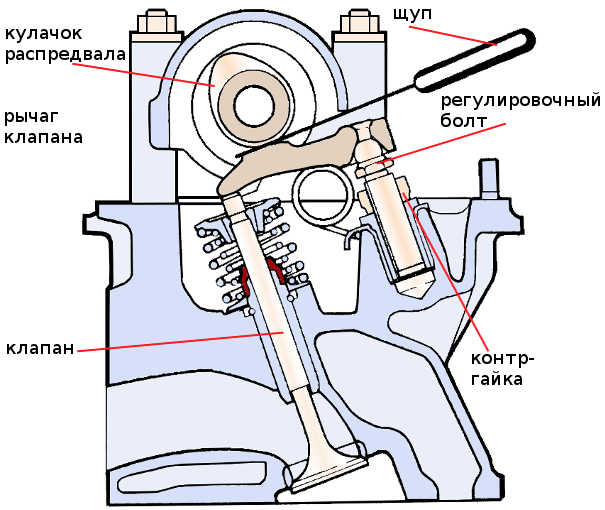
Valve clearance adjustment
 In most cars today, you can forget about such activities as adjusting valve tightening. Most, but not all.
In most cars today, you can forget about such activities as adjusting valve tightening. Most, but not all.
There are also designs that require periodic clearance checks.
Among cars several years old and older than a decade, almost all engines require valve adjustment.
Valve clearance is necessary for the correct operation of the engine, because due to the thermal expansion of materials and the systematic wear of the interacting  elements, it is necessary to ensure the correct operation of the engine, i.e. tightly closed valves. However, this gap must have an appropriate value. Too much or too little adversely affects engine longevity and proper operation. Large gaps cause additional metallic noise and accelerated wear on valves, camshaft lobes and rocker arms. On the other hand, too little or no clearance can lead to incomplete valve closing and a pressure drop in the combustion chamber. If the valves are not in contact with the valve seats, they will not be able to cool down, their temperature will rise and, as a result, the valve plug may be damaged (burnt).
elements, it is necessary to ensure the correct operation of the engine, i.e. tightly closed valves. However, this gap must have an appropriate value. Too much or too little adversely affects engine longevity and proper operation. Large gaps cause additional metallic noise and accelerated wear on valves, camshaft lobes and rocker arms. On the other hand, too little or no clearance can lead to incomplete valve closing and a pressure drop in the combustion chamber. If the valves are not in contact with the valve seats, they will not be able to cool down, their temperature will rise and, as a result, the valve plug may be damaged (burnt).
This situation will happen faster on LPG because the combustion temperature is slightly higher than on petrol. Moreover, when the gas composition is set too sparingly, the combustion temperature rises even more. Engine repairs will be expensive. And all this can be avoided by systematically adjusting the valves. The cost of this operation is very small in relation to the cost of subsequent overhaul of the engine.
In the vast majority of cars currently produced, valve clearances are regulated by hydraulic lifters. It's the same with almost all new cars. Only Honda and Toyota aren't sure about hydraulics and still periodically check them for gaps.  valve. Older cars vary, but it can be generalized that if an engine has four valves per cylinder, it is probably hydraulically controlled. The exceptions are some Ford, Nissan and, of course, Honda and Toyota engines. On the other hand, if the engine has two valves per cylinder, the mountings probably need to be adjusted. VW and Opel are an exception here. In the engines of these companies, the valves did not need to be adjusted for a long time.
valve. Older cars vary, but it can be generalized that if an engine has four valves per cylinder, it is probably hydraulically controlled. The exceptions are some Ford, Nissan and, of course, Honda and Toyota engines. On the other hand, if the engine has two valves per cylinder, the mountings probably need to be adjusted. VW and Opel are an exception here. In the engines of these companies, the valves did not need to be adjusted for a long time.
Adjusting valves on most vehicles is a simple operation. All you have to do is remove the valve cover and all you need is a wrench and screwdriver to adjust. However, in some models (Toyota), the adjustment is complex and requires special knowledge and special tools, since the camshafts, and hence the timing belt, must be removed.
The frequency of gap adjustment varies greatly. In some cars, it has to be done at every inspection, and in others, only when replacing the timing belt, i.e. the spread is from 10 to 100 thousand. km. If the engine is running on liquefied gas, the valve adjustment should be carried out even twice as often.
